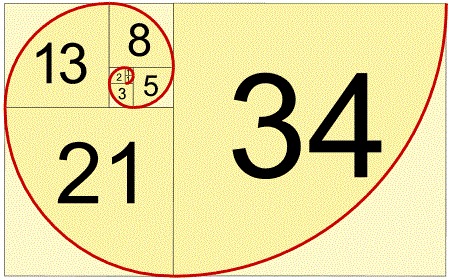
The Fibonacci Sequence is the series of numbers that is created by adding up the two prior numbers in the series to find the third i.e., the next number is found by adding up the two numbers before it. So for example, 1, 1, 2, 3, 5, 8, 13, 21, 34, … and so on. The 2 is found by adding the two numbers before it. In this case, 1+1=2. Along these same lines, the 3 is found by adding the two numbers before it, so 1+2=3.
When we make squares with those widths, we get a spiral:

This sequence was known in India for a number of centuries; however, it is named for Leonardo Pisano Bogollo, an Italian who lived in the twelfth century. “Fibonacci” was his nickname, which roughly means “Son of Bonacci”
Interestingly, we find this a lot in nature. Why do the number of spirals in a sunflower match up with the integers 34, 55, 89 and 144 (all numbers found in the famous Fibonacci Sequence)? Scientific American editor John Matson explains.
